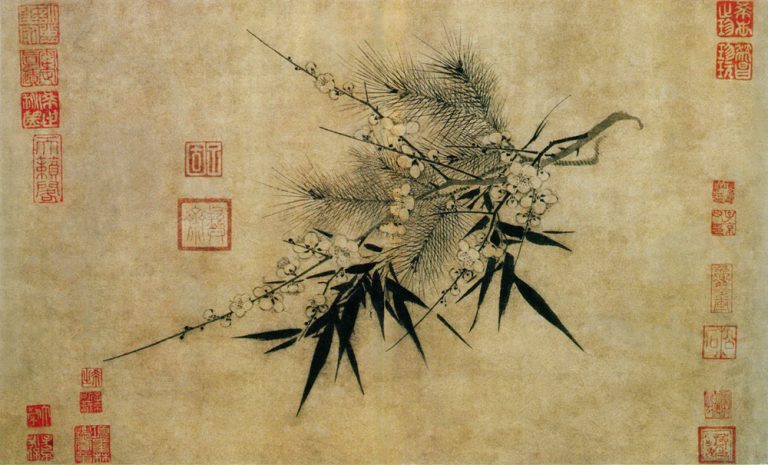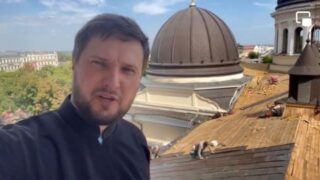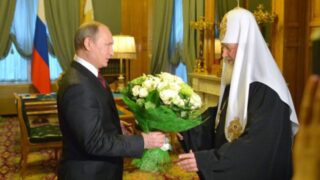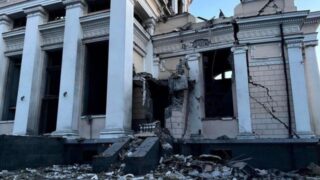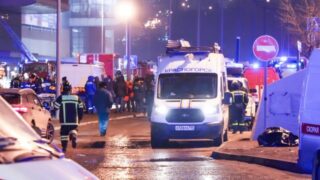Russia and its fellow travelers present the 2022 war as a consequence of American-inspired “coups” in Ukraine. But there were no “coups.”
by Massimo Introvigne
Article 1 of 4


One of the most popular arguments of Russian propaganda, which is unfortunately bought by a number of gullible Westerners, is that all what happened in Ukraine since 2014, including the invasion of 2022, derives from the “coups” of 2004 and 2014, where allegedly the United States orchestrated, twice, the ousting of President Viktor Yanukovych, who had been legitimately elected.
This argument is false. I will examine it in detail in a series of four articles, which will also discuss related myths.
In fact, claims that the United States organized “coups” in Ukraine start from the first Maidan revolt of 2004. The 2004 and 2014 revolts are different, although both were directed against the same pro-Russian politician, Yanukovych. To distinguish the two Maidan revolts, the second is generally called Euromaidan, and the first is called the Orange Revolution.
On November 21, 2004, the second round of Ukraine’s presidential elections opposed Prime Minister Viktor Yanukovych and opposition leader Viktor Yushchenko. Yanukovych had a reputation as pro-Russian, and certainly Russia preferred his victory, although Russia was not the only issue in the campaign. After most media had started commenting the victory of Yushchenko on the basis of the exit polls and projections, surprisingly the Central Electoral Commission announced that Yanukovych had won. Putin immediately congratulated Yanukovych for his election.


At the invitation of the Ukrainian government, of which Yanukovych was Prime Minister, the OSCE (Organization for the Security and Cooperation in Europe) had sent more than 500 observers to control the elections. I have worked myself at the OSCE, and regard any attempt to depict it as a puppet of the United States as ludicrous. Russia, Belarus, and the pro-Russian Central Asian republics are all OSCE participating states, and the 2004 observers came from 46 different countries.
The OSCE observers refused to certify the fairness of the run-off elections of November 21, and concluded that there had been massive electoral fraud. By way of example, in one of the heavily pro-Yanukovych Donbass districts, the turnout was reported at 127%. Voters turnouts approximating 100% are already suspicious in all countries, but 127% is a world record and clear evidence of fraud.
Protesting the electoral frauds, many Ukrainians took to the streets in what was called the Orange Revolution. Certainly also because of these protests, the Ukrainian Parliament on December 1 passed a resolution against Yanukovych.
The opposition had also petitioned the Supreme Court, which on December 3 ruled that there was solid evidence of electoral fraud but stated it was not in a position to proclaim Yushchenko as the winner. Instead, the Supreme Court ordered a re-run of the second round of voting, inviting again OSCE observers. The new second turn election took place on December 26. It was certified by the OSCE as fair, and gave Yushchenko 51.99% of the votes against 44.20% of Yanukovych. The results were similar to the media projections on November 21.
Yanukovych claimed that these projections derived by media bias against him. This is possible, but the OSCE did not rely on the discrepancy between the media projections and the results to declare the November 21 elections fraudulent. It relied on what its own observers had seen.


Was there a first coup against Yanukovych in 2004? Not really. Just as it would happen in the United States and most other democratic countries, the Supreme Court of Ukraine had the power to rule on the validity of the elections, and it decided the run-off should be repeated because of the frauds perpetrated on November 21.
Was the Orange Revolution organized by the United States? The answer is no. Protests against the electoral fraud were spontaneous and widespread. The fact that the United States and the European Union refused to recognize Yanukovych as the elected President might have encouraged the protesters and even the Parliament and the Supreme Court, but did not create their protests and decisions.
Rarely mentioned is also the Russian role in supporting pro-Yanukovych protests in Donbass and Crimea, his electoral strongholds, where calls for separatism started being heard. Yanukovych supporters from these regions went to Kiev to oppose the Orange Revolution, but were quickly outnumbered by anti-Yanukovych protesters, which were evaluated at one million.
The Orange Revolution in Ukraine has been studied as the model “color revolution,” although it was preceded by the Rose Revolution in Georgia in 2003, and there were earlier precedents in Slovakia and Serbia. Both Russia and China have depicted “color revolutions” as American plots to overcome governments friendly to them. They have found support for their criticism of “color revolutions” in books and articles by Western journalists. Russia has also tried to adopt the same strategy. Protests in Crimea and Donbass in 2014, the so-called “Russian Spring” to which we will return in another article of this series, were described as a “counter-color revolution” fueled by Russia.
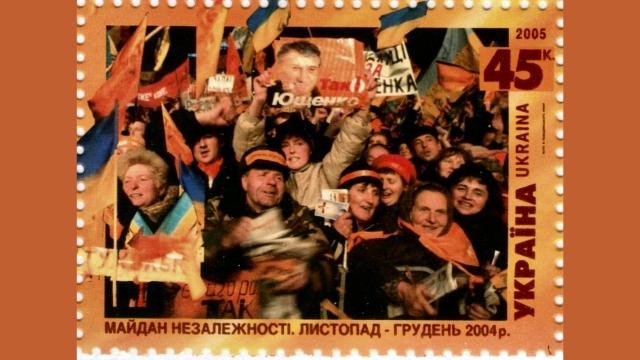

There is considerable scholarship on the color revolutions. While they consider foreign influences—both by the West and by Russia (and China, when color revolutions erupted in Central Asia)—, studies have largely reconstructed color revolutions as arising from expectations of democracy that were betrayed by governments ruling through corruption and electoral fraud. Very few revolutions in history happened without the support of some foreign countries—and the hostility of others. What was specific of the color revolutions was not American support and Russian-Chinese hostility. It was their being rooted in a specific post-Cold-War situation, in countries where democracy has been promised but not delivered.
The color revolutions typically happened in semi-authoritarian, and at the same time semi-democratic, systems, which allowed for a limited but real development of an independent civil society, including NGOs and comparatively free academia and press. Clearly, there were differences between color revolutions in different countries. Typically, in the case of the Orange Revolution of 2004, the civil society of large cities took to the streets to protest fraud in elections that had not been conducted according to democratic standards. The Western support, coupled with Russian hostility, boosted the Ukrainian color revolution—but it did not create it.
